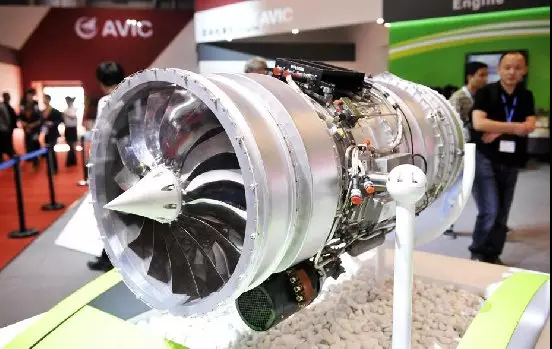In December 2016, Fengyue IV entered space;
On May 5, 2017, China's independently manufactured and developed large passenger aircraft C919 flew into the blue sky;
In recent years, I believe that news about China's aerospace industry has become commonplace, and behind this lies the hard work of countless aerospace professionals. It also marks a new height in China's aerospace industry in the context of "Made in China 2025".
Of course, this is also inseparable from the continuous research and development of new materials in China, which can provide a larger stage for the aerospace industry to showcase its capabilities. Among them, ceramic materials are undoubtedly the most dazzling stars, whether applied in engines or sensors, they can provide the best guarantee for aircraft.
Currently, major engine manufacturers in the United States, Russia, and Europe are exploring the use of ceramic matrix composites in the hot end of aircraft engines. Among them, CFM's Leap-1A civilian turbofan engine equipped with ceramic matrix composite (CMC) high-pressure turbine casing rings successfully completed its maiden flight on the new Airbus A320neo aircraft on May 19, 2015. This technology was successfully developed in China as early as 2006. The WS-15, also known as the "Emei" turbofan engine, is a small bypass ratio thrust vectoring turbofan engine developed for China's fourth generation heavy/medium-sized fighter jets. The WS-15 is mainly used for the twin engine heavy stealth fighter J-20. WS-15 was developed by experts from units such as 606, 624, 614, 410, 430, and 113. The technical validation aircraft for the "Emei" aircraft engine successfully underwent its first test run on a test bench in May 2006. This marks a historic leap in China's independent development of aviation engines, and a solid step forward in the journey of developing China's fourth generation medium-sized fighter jets. In 2011, AVIC Dawn completed the delivery of the WS-15 validation aircraft.

To get to the point, today we are going to talk about the application of ceramic circuit boards in aerospace. Previously, we only wanted to let you understand the strength of ceramic materials. Ceramic circuit boards are also used in airplanes and spacecraft, mainly for sensors. A spacecraft is actually a large collection of sensors.

In the air or space, aircraft must withstand ubiquitous forces, and the magnitude of the force determines whether the aircraft can operate normally. Therefore, many pressure sensors are needed to detect these forces, such as the engine's intake pressure sensor, exhaust pressure sensor, cabin pressure sensor, extravehicular pressure sensor, and a series of force sensors.
Usually, the measurement of pressure sensors will drift with changes in working environment and static pressure. In some small pressure or differential pressure measurement situations, this drift is likely to be quite severe. Obtaining the most accurate measurements under different working conditions to maintain production stability and ensure process consistency is a reflection of the stability of pressure sensors and a requirement for the stability of pressure sensors in the aerospace industry. On the basis of stability and reliability, high precision is a higher demand for pressure sensors in the aerospace industry. The accuracy of control depends on the accuracy of measurements during the control process. The higher the measurement accuracy, the higher the control accuracy. At present, the accuracy of most pressure sensors reaches 0.075%, but it is difficult to meet the measurement accuracy requirements of the aerospace industry. In addition, the aerospace industry has many other demands for pressure sensors. For example, resistance to cosmic rays, corrosion, etc.
At this point, it's time for ceramic substrates to show off their skills again. With the advancement of ceramic materials, they can achieve higher accuracy. More importantly, the stability of ceramic materials is much better than other materials. As inorganic materials, they are resistant to cosmic rays and acid and alkali corrosion, and will shine brightly in the aerospace field.
With the continuous advancement of technology, its application in aviation and aerospace will be more extensive. As a ceramic circuit board manufacturer, Sliton hopes to take advantage of the opportunity of "Made in China 2025" to contribute its own strength to China's aerospace industry.






